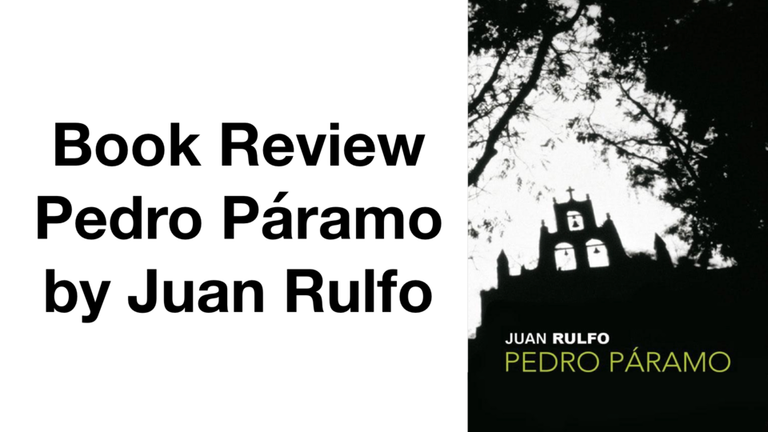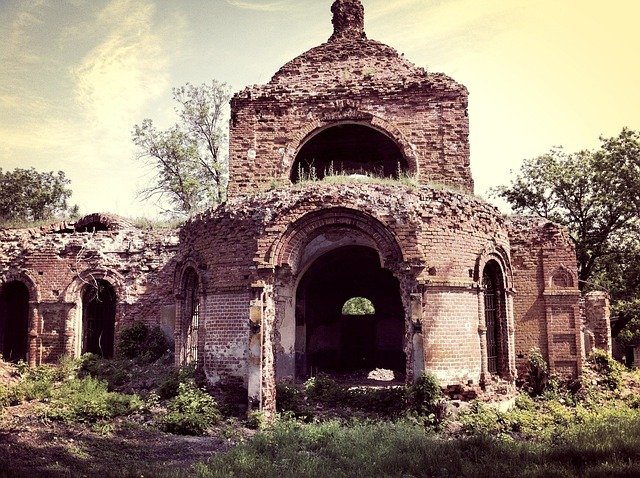

More than forty-five years ago I heard in a literature class when I was a sophomore in high school, the title of the novel “Pedro Páramo” by Mexican writer Juan Rulfo. It briefly references the approach to magical realism in Latin American narrative. In those years, the obligatory reading was “One Hundred Years of Solitude” by Gabriel García Márquez, a Colombian writer who would win the Nobel Prize for Literature in 1982. And Rulfo's sublime work was left behind, in the imagination of my classmates, as misty and diluted in time.
Today, in my second great reading of the year, I immersed myself in “Pedro Páramo”: a literary masterpiece. The novel develops a fascinating and enthralling story in just 80 pages. However, don't underestimate it. The narrative style is elegant, the plot crosses blurred boundaries between the real and the magical. The events seen through the prism of the memories of the living and the dead encompass the ghostly and the dreamlike during a time of conflict in Mexico.
Although Juan Rulfo (born in Apulco on May 16, 1917, and died on January 7, 1986, in Mexico City) was not a prolific writer, there is no doubt that his two short novels and short story collections are of superb workmanship. In addition, he was also a successful historian, photographer, and film scriptwriter.
Those of you who have read my book reviews in the past know very well that I avoid giving synopses of the works as much as possible. I prefer to ramble on based on sensations, emotions, and thoughts. However, I understand that it is necessary to provide an opener that will hook potential readers. In this sense, I will try not to spoil the pleasure of their reading. Let's see, you be the judge.

Source: Image by mazina_mari on Pixabay
Pedro Páramo was finally published in 1955, after three advances. The novel begins with Juan Preciado's trip to Comala to meet his father, Pedro Páramo, the biggest and most abusive landowner there, by a promise he made to his mother on her deathbed. Upon his arrival, he finds a town in ruins, desolate, and arid by the scorching sun of western Mexico. Juan meets characters, trapped between life and death, who reveal the history of the town and his family, through reminiscences, hallucinations, and visions filtered through reality and paranormal events where the law of the strongest prevails, set during the Cristero revolts (insurgencies of the peasants against the government due to injustice and religious reforms at the beginning of the 20th century). Reading this novel implies an effort to discern the succession of events through time jumps in the plot and the involvement of the conscience.
I enjoyed the novel, sitting on the comfy couch in my living room. If you are up for it, you will enjoy it too if you like the fluid and timeless style of dealing with themes of death and the afterlife, the search for identity, power and oppression, loneliness and rootlessness, memory, and time.
Pedro Páramo has been translated into several languages. The most recognized English version is that of Douglas J. Weatherford for its faithfulness to the original. Also, a miniseries is currently available on Netflix about this novel. Perhaps, I will be encouraged to watch it in the future.
Do I recommend it? Yes, absolutely, without reservation. If I didn't, I wouldn't have bothered to write here for you.

Book review by @janaveda originally written in Spanish and translated into English with www.deelp.com (Free version)
The thumbnail was created from the capture of the book cover and edited with Keynote
Thanks for reading me. I hope this review is to your liking. I would very much like to read your comments in this regard to enrich myself with your criticism.
Tired...! Are you no longer satisfied with traditional social networks?
Then I invite you to get to know Hive by clicking here.
Join our global community, where uncensored freedom is our north.



Hace más de cuarenta y cinco años que escuché en una clase de literatura, cuando cursaba en segundo año de bachillerato, el título de la novela “Pedro Páramo” del escritor mexicano Juan Rulfo. Fue una referencia breve para abordar el realismo mágico en la narrativa latinoamericana. En aquellos años, la lectura obligada era “Cien Años de Soledad” de Gabriel García Márquez, escritor colombiano que ganaría en 1982 el premio Nobel de Literatura. Y la excelsa obra de Rulfo, quedó atrás, en el imaginario de mis compañeros, como brumoso y diluido en el tiempo.
Hoy, en mi segunda gran lectura del año, me sumergí en “Pedro Páramo”: una obra maestra de la literatura. La novela desarrolla una historia fascinante y atrapante en apenas 80 páginas. Empero, no la menosprecien. El estilo narrativo es elegante, el argumento traspasa fronteras difusas entre lo real y lo mágico. Los hechos vistos desde el prisma de los recuerdos de vivos y muertos abarcan lo fantasmal y lo onírico durante una época conflictiva de México.
Si bien, Juan Rulfo (nacido en Apulco 16 de mayo de 1917 y fallecido el 7 de enero de 1986 en Ciudad de Mexico) no fue un prolífico escritor, no hay duda de que sus dos novelas cortas y recopilatorio de cuentos son de magnífica factura. Además, también desempeñó con éxito como historiador, fotógrafo y guionista de cine.
Vosotros, quienes habéis leído en el pasado mis comentarios sobre libros, sabéis de sobra que evito en lo posible dar sinopsis de las obras. Prefiero divagar con base en las sensaciones, emociones y pensamientos. No obstante, comprendo que es necesario proporcionar un abreboca que enganche a los potenciales lectores. En este sentido, intentaré no estropear el placer de su lectura. A ver, juzguen ustedes.

Fuente: Imagen de mazina_mari en Pixabay
Pedro Páramo fue publicada en definitiva en 1955, luego de tres avances. La novela empieza con el viaje de Juan Preciado al pueblo de Comala para conocer a su padre, Pedro Páramo, el mayor latifundista y abusivo de allí, en virtud de la promesa echa a su madre en su lecho de muerte. A su llegada, él encuentra a un pueblo en ruina, desolado, árido, quemado por el abrasador sol del oeste de México. Juan va encontrándose con personajes, atrapados entre la vida y la muerte, quienes le van develando la historia del pueblo y de su familia, a través de reminiscencias, alucinaciones y visiones tamizadas de realidad y eventos paranormales donde impera la ley del más fuerte, ambientada en las revueltas cristeras (insurgencias de los campesinos en contra del gobierno por la injusticia y reformas religiosas al principio del siglo 20). Leer esta novela, implica un esfuerzo para discernir la sucesión de los eventos por intermedios de saltos temporales en la trama e involucramiento de la conciencia.
Disfruté la novela, sentado en el cómodo sofá de la sala de mi casa, de un tirón. Y de seguro, si te animas, también la disfrutarás, si te gustan el estilo fluido y atemporal para tratar temas sobre la muerte y el más allá, la búsqueda de identidad, el poder y la opresión, la soledad y el desarraigo, la memoria y el tiempo.
Pedro Páramo ha sido traducida a varios idiomas. La versión en inglés más reconocida es la de Douglas J, Weatherford por su apego al original. Asimismo, en la actualidad está disponible una miniserie en Netflix sobre esta novela. Quizás, me anime a verla en el futuro.
¿Qué si la recomiendo? Sí, absolutamente, sin reserva. Si no fuese así, no me habría molestado en escribir aquí para ustedes.

Reseña del libro por @janaveda
La miniatura se creó a partir de la captura de la portada del libro y editada con Keynote
Gracias por leerme. Espero que esta reseña sea de su agrado. Me gustaría mucho leer sus comentarios al respecto para enriquecerme con sus críticas.
¡Cansado! ¿Ya no te satisfacen las redes sociales tradicionales?
Entonces, te invito a conocer Hive presionando aquí.
Únete a nuestra comunidad global, en donde la libertad sin censura en nuestro norte.
